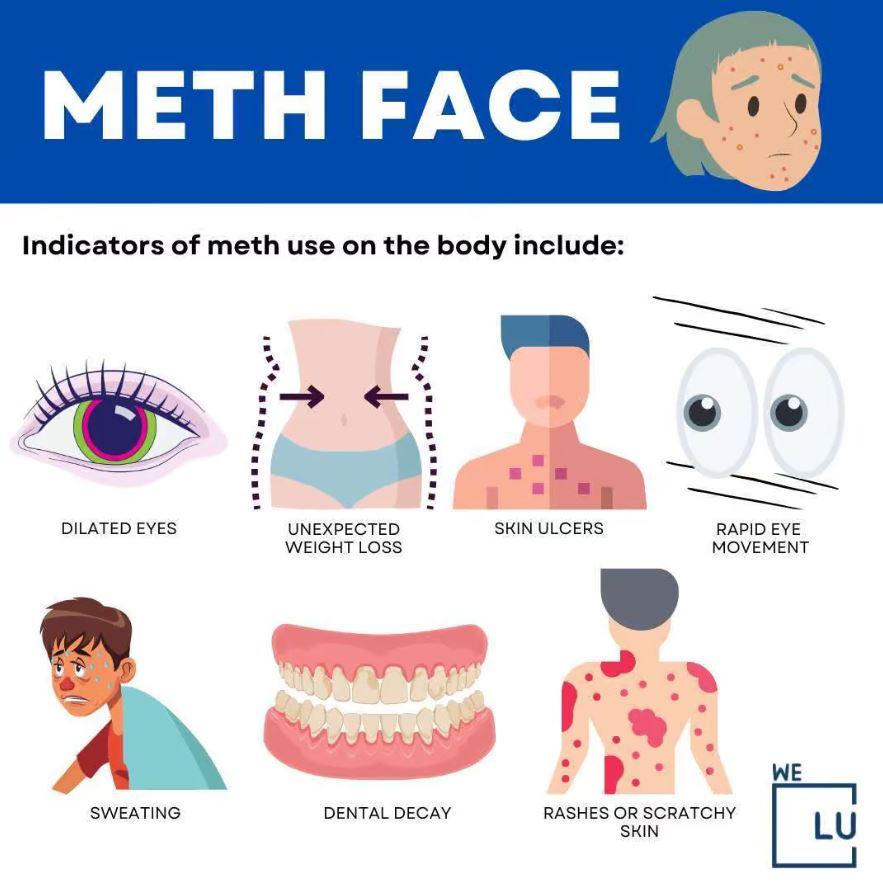Methamphetamine also known as meth, is an extremely addicting and powerful stimulant that causes havoc on both the mind and body of its users. While the adverse consequences of methamphetamine for the brain and general health are well-documented, its impact of the effects on skin are usually ignored. Meth sores, also referred to as methamphetamine-induced skin lesions, serve as a visible reminder of the destructive consequences of meth abuse. The painful and frequently infected sores typically appear on exposed body parts such as the arms, face, and legs. They serve as physical evidence of the harm caused by this devastating drug.
Understanding Methamphetamine-induced Skin Lesions:
The meth sores are a result of the physiologic changes triggered by methamphetamine. The drug causes a series of harmful effects on your body, including decreased blood flow, impaired wound healing, and an increased risk of infection. These factors, combined with the psychological manifestations of methamphetamine abuse such as compulsive picking and scratching, contribute to the formation of sores that are painful and open.
Appearance and Location:
The skin lesions caused by meth vary in appearance and extent. They typically begin as small itchy, red, and swollen bumps that quickly grow into more extensive open sores. The lesions are found throughout the body, but they are most typically seen on the face, arms, and legs. The public's awareness of them increases the psychological and social repercussions meth lesions become difficult to hide and can be stigmatizing for individuals struggling with addiction.
Health Risks and Complications:
The open nature of meth-sores exposes individuals to an increased possibility of getting ill. Infections caused by bacteria, such as cellulitis, may result from the infiltration of pathogens into the wounds which are not closed. Furthermore, the compulsion to pick and scratching associated with methamphetamine abuse further exacerbate the risk of secondary infections and lead to deeper tissue destruction. In severe cases, these infections may spread throughout the body with life-threatening implications.
Psychosocial Impact:
Beyond the physical consequences, the psychosocial impact of meth-related sores should not be overlooked. The physical and emotional character of these sores frequently results in severe social isolation, low self-esteem, and diminished the quality of life for those affected. The presence of meth sores can elicit negative reactions from others, thereby perpetuating societal stigmas and preventing their reintegration to society.
Treatment and Prevention:
Treating meth sores requires multi-faceted treatment that tackles both the addiction issue and the resultant skin lesions. The most comprehensive treatment for addiction that include counseling, therapy for behavioral disorders, and medical interventions, are vital in battling methamphetamine addiction. In addition, dermatological treatments like wound care, antibiotics to treat infections, and scar management can help improve the appearance of the skin and help promote healing.
Prevention is equally crucial. Public awareness campaigns that emphasize the physical effects of methamphetamine usage can deter potential users and encourage addicts to seek out help. Accessible addiction treatment resources and networks of support play an integral function in preventing the development of meth sores by dealing with the root cause of the problem.
Conclusion
Methamphetamine-induced skin lesions, commonly known as meth sores, serve as a stark reminder of the detrimental impact of methamphetamine abuse on the skin. The painful and visible lesions on the arms, face and legs show the damage caused by this destructive drug. Beyond the physical harm and psychological effects, meth sores are a further source of challenges faced by those affected. Through educating people, encouraging the prevention of meth sores, and delivering a thorough treatment, the community can work towards reducing the prevalence of meth sores and supporting people on their way towards recovery.
Also check: Pass a methamphetamine drug test

Comments
Post a Comment